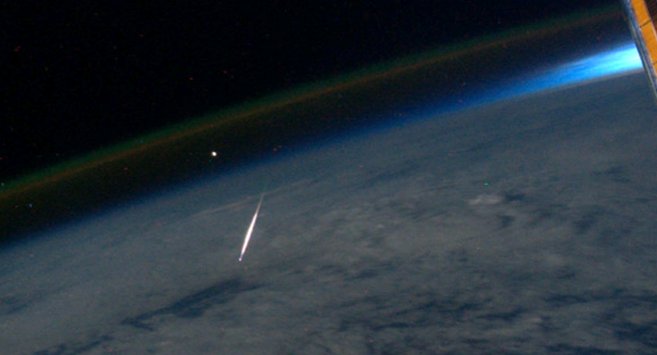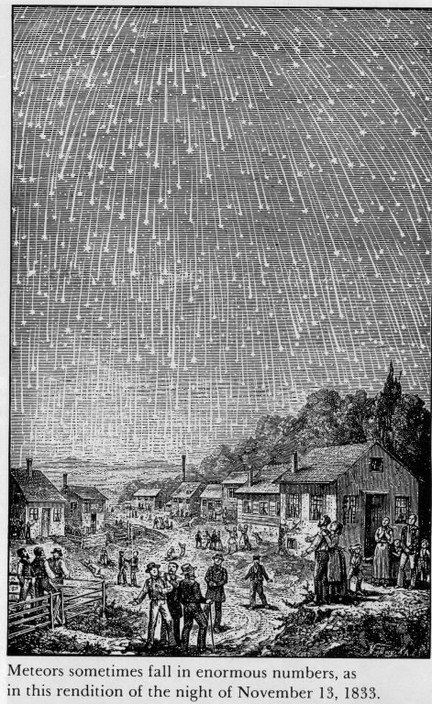Spectacular meteor shower
The Perseids Meteor shower occurs in August each year, and this year promises to be a spectacular year.
Peak activity is soon: Overnight August 11th – 12th, overnight August 12th – 13th.
In the distant past, meteor showers frightened and caused panic as can be seen by this one that occurred over the United States in 1833, The annual Perseids Meteor shower has been reported by millions since A. D. 36.
Short time-lapsed film of Perseid Meteor Shower of 2009 on Youtube by Jeff Sullivan.
Ten interesting facts you may not have known about the Perseids Meteor shower
- Earliest information on the Perseids Meteor shower dates back to the Chinese when it is mentioned in the Chinese annals in A.D. 36
- Catholics refer to the Perseids as the ‘tears of Saint Lawrence’ since August 10 is the date of that saint’s martrydom.
- Adolphe Quetelet reported the meteor shower in 1835 and is given credit for recognizing its annual appearance.
- The last time the Perseids peaked at the same time as the new moon was in 2007.
- The Perseids meteor shower is a result of the comet Swift-Tuttle, which makes a complete orbit around the sun every 133 years. As it flies through space it sheds bits of material from its nucleus which has turned into a ring of dusty debris. The Earth orbits through this ring each August and stray bits of comet dust slams into our atmosphere at 37 miles per second.
- Gionanni Schiaparelli realized in 1865 that the comet Swift-Tuttle was the source of the Perseids.
- Comet Swift-Tuttle last visited the inner solar system in 1992.
- Comet Swift-Tuttle was discovered in 1862 by Lewis Swift and Horace Tuttle. Swift-Tuttle is a large comet — its nucleus is 26 km (16 miles) across. (That is more than twice the size of the object hypothesized to have led to the demise of the dinosaurs.)
- The first observer to provide an hourly count for this shower was E. Heis (Münster), who found a maximum rate of 160 meteors per hour in 1839.
- The moon and the International Space Station are lining up to make this year’s Perseids meteor shower even more stunning than usual in many parts of the world.
 A Perseid meteor lights up as it streaks through the Earth’s atmosphere, as seen and photographed by Ron Garan while aboard the International Space Station on August 13, 2011. (Nasa.gov)
A Perseid meteor lights up as it streaks through the Earth’s atmosphere, as seen and photographed by Ron Garan while aboard the International Space Station on August 13, 2011. (Nasa.gov)
Best place to watch
The best meteor observing takes place far from city and neighbor lights. If you can’t escape light pollution, observe from the darkest corner of your backyard, park, or school yard and patiently watch the darkest portion of the sky.
Meteor Showers: An Annotated Catalog (The Patrick Moore Practical Astronomy Series)
Did you know that religious persecution occurred in early America? Read about it in the Tapestry of Love historical series by author Donna R. Causey



